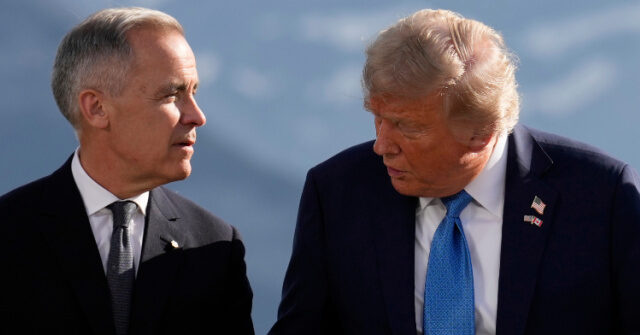President Donald Trump’s recent decision to halt trade negotiations with Canada marks another significant turn in the ongoing trade tensions between the two countries. The move comes as a response to Canada’s implementation of a new “Digital Services Tax” aimed at American technology companies. Trump took to Truth Social to express his disapproval, describing the tax as a direct assault on the United States.
Trump’s criticism of Canada isn’t new. For years, he has highlighted the challenges American farmers face due to Canadian tariffs on dairy products, which he claims can reach as high as 400%. Now, with this new tax on digital services, Trump believes Canada is following the European Union’s lead, which has also implemented similar measures against American tech giants.
Ending trade talks with Canada is a bold step, reminiscent of earlier trade spats with former Prime Minister Justin Trudeau. Trump’s administration had previously made progress in negotiations, but the introduction of the digital tax has prompted a swift response. Trump asserted that Canada’s “egregious Tax” warranted an immediate end to discussions.
The new tariff on Canadian goods is expected to be announced within a week, according to Trump’s statement. This decision underscores the administration’s commitment to protecting American interests, especially in the tech sector. Major U.S. companies such as Amazon, Google, and Meta stand to be impacted by Canada’s tax, which applies retroactively to 2022.
Despite fierce opposition from the U.S., Canadian officials remain steadfast. They have decided not to pause the digital services tax, demonstrating their resolve in the face of international pressure. Under the USMCA agreement, compliant Canadian goods remain exempt from tariffs, but non-compliant products could face a 25% duty.
Energy and potash exports from Canada are already subject to a 10% tariff, as part of Trump’s reciprocal worldwide tariffs announced on April 2, known as “Liberation Day.” These measures aim to address trade imbalances and ensure fair treatment for American businesses. Trump’s administration has frequently emphasized its commitment to leveling the playing field in international trade.
Canadian Prime Minister Mark Carney responded to Trump’s post, emphasizing the importance of complex negotiations. Carney stated that these efforts are conducted with the best interests of Canadians in mind. His comments suggest that Canada is prepared to navigate the challenges posed by this latest trade dispute.
The digital services tax is just one of many issues straining the U.S.-Canada trade relationship. As both nations grapple with these challenges, the impact on businesses and consumers remains uncertain. Trump’s decision to impose tariffs on Canadian goods is likely to have ripple effects across various sectors.
While Canadian officials maintain their stance, the U.S. administration is determined to protect its economic interests. The digital tax issue highlights the broader global trend of scrutinizing and taxing tech giants, as governments seek to adapt to the digital age. Trump’s decisive actions reflect his administration’s commitment to standing firm against perceived injustices in international trade.
The ongoing trade tensions underscore the complexity of modern global commerce. As nations pursue their own economic agendas, the potential for conflict and negotiation remains ever-present. For now, the world watches as the U.S. and Canada navigate this latest chapter in their trade relationship.
The future of U.S.-Canada trade relations is uncertain, with both sides holding firm to their respective positions. As negotiations continue, businesses and policymakers must stay vigilant and adapt to the evolving landscape. The stakes are high, and the outcomes of these discussions will have lasting implications for both countries.


I get paid over $220 per hour working from home with 2 kids at home. I never thought I would be able to do it but my best friend earns over $35,000 a month doing this and she convinced me to try. it was all true and has totally changed my life… This is what I do, check it out by Visiting Following Link.
🙂 AND GOOD LUCK. 🙂
.
COPY HERE →→ → HighProfit1.Com